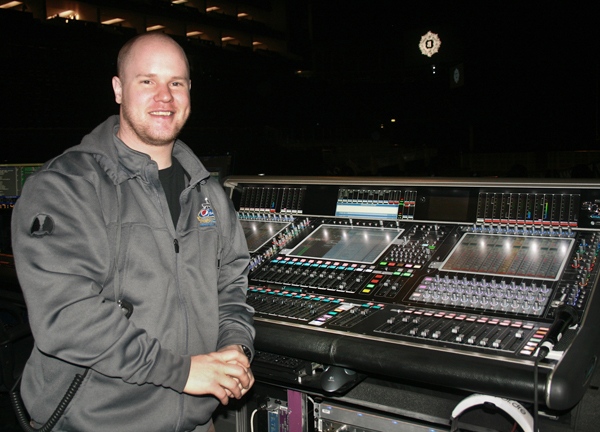Whether you’re an ardent fan or just someone who appreciates a great performance, Beyoncé is a special talent.
A couple of months ago, the 17-time Grammy Award-winner brought her thriving The Mrs Carter World Tour to London’s O2 arena, where I met up with her sound team, including front-of-house engineer Stephen Curtin of Eighth Day Sound, which is supporting the tour via its operations in Highland Heights, OH, and Colnbrook in the UK.
What might be surprising to some, Curtin notes at the outset of our conversation, is that the artist is very hands-on in her approach towards live shows. She reviews a show tape every night, and is heavily involved when it comes to live sound.
“Beyoncé is definitely not shy about offering her opinions on things, and to be honest, it’s good to hear those specifics, although it’s not always easy making them happen,” Curtin explains with a smile. “She always wants a nice clean vocal, but she gets far more particular than that: she likes to be very well heard over the music out front, which can be challenging for me as I have to build in some headroom, first to accommodate the music and then her vocal, and that’s before you start hitting any kind of system conversion.”
No Limits
Due to her wide dynamic range, Beyoncé‘s vocal chain is understandably longer than most: signal from the Sennheiser EM 3732-II receiver for her Sennheiser SKM 5200-II custom chrome wireless handheld (with MD 5235 dynamic capsule) hits the pre-amp on Curtin’s DiGiCo SD7 console at front of house, gets tamped down a bit by an inserted Avalon 737 compressor, and then receives a “light squeeze” from a Waves C6 compressor plug-in before finally settling at the master fader.
“The vocal’s going through a few different stages, but it’s not limiting her dynamic range; it’s just harder live than in the studio to be able to go with the music,” Curtin insists. “She’s got to be limited beforehand, to find out how low she can go before she’s lost, so it’s a case of balancing compression to get it to sit in a pocket of 8 dB as opposed to 20 dB.”
Curtin sets up 80 channels on his SD7 for Beyoncé and her all-female band, several of them fed by more EM 3732-II receivers with SKM 5200-II handhelds for backing vocalists and SK 5212-II beltpack transmitters for horn players. The console is also running at 96 kHz resolution.
“I’ve always been a DiGiCo man, and it’s fantastic that we can run at 96 kHz,” he says. “This means we’re straight out of the desk into the Lake processors and amplifiers at the front end of the PA without any sample rate converting going on whatsoever.”
Signal is both AES and analog – Daniel Gonzales, monitor engineer for Beyoncé and her backing singers, gets digital at his own SD7, while Demetrius Moore, monitor engineer for the band, gets an analog feed to his Avid VENUE Profile console in order to avoid sample reconversion. Curtin is utilizing a DiGiCo SD-Rack at FOH, with four more on stage. Flexibility is key on this show, he says, and much of that stems from his DiGiCo setup.
“I have one local SD-Rack and there are three on stage which we’re using as inputs; then there’s a fourth SD-Rack which is mainly used for the support stuff and a few extra bits and pieces,” he explains. “The flexibility of DiGiCo is what drew me to the consoles in the first place; everything is simpler and more intuitive, and compared to other consoles, there are less steps to go through to get to where you want to be when mixing.”





















